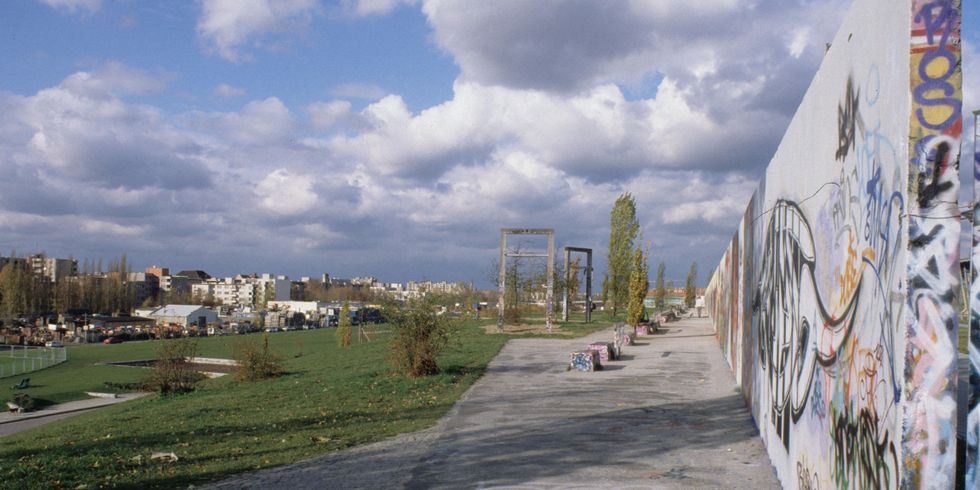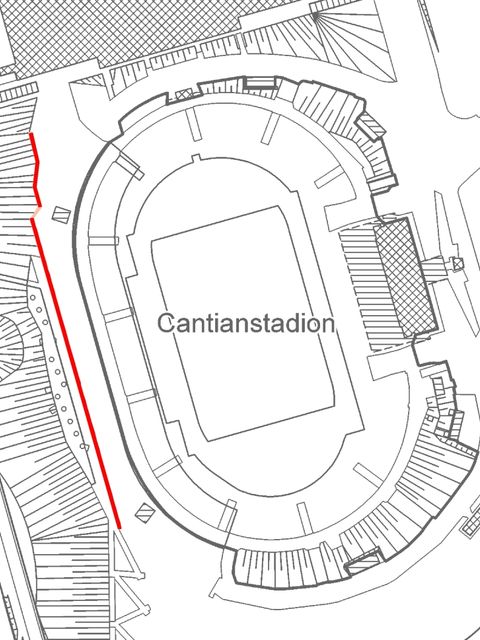From “no man’s land” to “Mauerpark” in Prenzlauer Berg
In the years after the Wall came down, the former border strip made way for a “Mauerpark” (Wall park) that created an open green space between the densely populated boroughs of Wedding and Prenzlauer Berg. It extends from Bernauer Straße in the south to Gleimstraße in the north and is a popular recreation area for the neighborhood.
Designed by the Hamburg landscape architect Gustav Lange and realized by Grün Berlin Park & Garten GmbH in 1993, this park embodies the idea that the former border strip running through Berlin should be transformed into a ribbon of green space. While other lots located in what was once the “no man’s land” were subject to restitution claims or were sold or privatized in line with federal economic interests, changing this “border space into free space” (Gustav Lange) was possible because the land here was undeveloped even before the Wall was built. Starting in 1820, it had been a military parade ground called “The Lone Poplar,” and in 1848 it was the scene of pivotal events in the March Revolution. The track system of the Stettiner freight depot was built on the property to the west in 1872, and after 1914 allotment gardens, makeshift housing, and sports facilities occupied the former parade ground. In GDR times it was home to the soccer team Dynamo Berlin, which drew regular crowds to this sports venue near the border. As a result, the Hinterland wall (inner wall) here was especially high, with an unusually smooth surface, and stood further away than usual from the “death strip.” For decades the Wall’s existence prevented any development of this fallow land, thus making it possible to build a “green bridge” from east to west once it fell.
Around 300 meters, in three sections, of the Hinterland wall have been preserved along the Friedrich-Jahn-Stadion. Gustav Lange integrated this Wall segment, classified as a historical monument since 2001, into his design for the Mauerpark.


